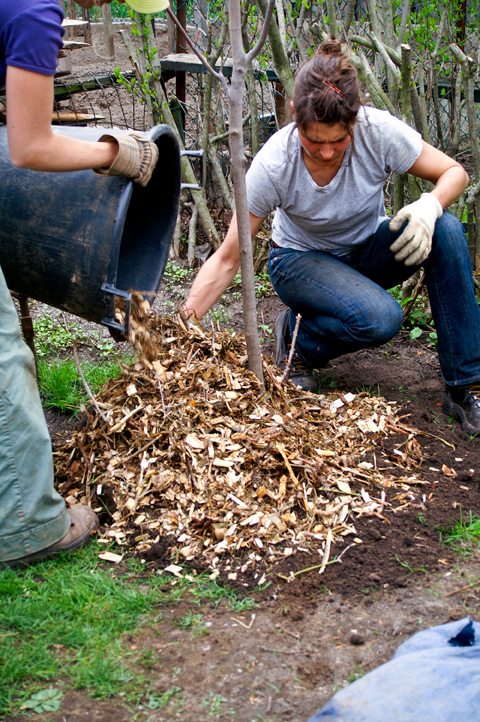Keep watering your trees until the ground freezes
Most urban trees suffer from drought. This stress weakens a tree’s ability to withstand winter conditions. Fall watering is especially important for evergreens, which continue to lose water through the winter months. Water your tree by placing a hose at the base of the tree on a slow drip for approximately 15 minutes (or apply 3 to 4 buckets) once or twice a week. For mature trees, a soaker hose can be used and spread on the ground out as far as the trees branches reach.
Replace the mulch around the base of your trees
A layer of organic mulch, such as woodchips, helps to moderate temperature fluctuations and moisture loss around roots. Mulch gradually decomposes, adding organic matter to the soil, and should be replenished in fall before the ground freezes. Spread mulch 3 to 4 inches thick in a doughnut shape around your tree. Ensure that mulch is not piled up around the trunk, as this may cause rotting of the bark.

Leave your leaves where they fall
Leaves are a tree’s natural fertilizer. When fallen leaves decompose, they contribute nutrients and organic matter back to the soil. An exception should be made for leaves that are diseased. Many diseases, such as powdery mildew, can over winter in fallen leaves and may infest your tree again the following year. Diseased leaves should be removed from the yard.
Do not apply salt near trees in winter
Salt applied to driveways, walkways, and other areas in winter eventually migrates down into the surrounding soil. This can cause serious damage to trees, even those located several meters away. Try applying sand as an alternative.
Pruning can be done after the tree goes dormant
Corrective pruning – the removal of diseased, crossing, or damaged branches – can be done on most tree species during winter months. Be sure to research proper pruning methods and timing, as mistakes can have serious tree health implications and visit Trees Are Good for excellent resources. You should contact a professional for pruning work on larger trees. A certified arborist with proper equipment and insurance should do any work that is “off the ground” or involves branches larger than 5cm in diameter. To locate an Arborist in your area, contact the International Society of Arboriculture or call 1-888-463-2316.
